Yihua Hotel
2024-04-07
76, Jeollagamyeong-ro, Wansan-gu, Jeonju-si, Région Jeonbuk
+82-63-284-6699
As a three-story building with a basement floor, Jeonju Yihua Hotel is located in Jeon-dong in the eastern part of Jeonju Hanok Village. It's a medium-sized hotel with 26 Suite, Standard Double, Standard Korean-style, and Deluxe Twin rooms. The room rates are reasonable for both tourists and business travelers. The front desk lobby is on the 1st floor, and the rooms are on the 2nd and 3rd floors. Facing the front desk are a computer with Internet connection and a printer as well as a microwave oven. The 1st floor of the hotel is rented to a cafe named "Turista," which is popular for its brunch. Many guests staying at Yihua Hotel have brunch here before taking a tour of Jeonju. Nearby tourist destinations include Gyeonggijeon Shrine, Jeondong Catholic Cathedral, Jeonju Hanok Village, JIFF (Jeonju International Film Festival) Street, and Pungpae Jigwan (Jeonju Inn). The Gyeonggijeon Shrine, Jeonju JIFF Street, and Pungnammun Gate are 3 minutes, 5 minutes, and 3 minutes away from the hotel on foot, making it a popular place to stay among Korean and foreign tourists.
Yeohangga / 여행가
2025-08-12
74-11, Eunhaeng-ro, Wansan-gu, Jeonju-si, Région Jeonbuk
+82-63-231-3040, +82-10-7742-6738
Yeohangga is a guesthouse owned and run by a woman who majored in early childhood education and who has been teaching children for over 20 years. The name means "A home for a happy trip," she says. It’s a unique guesthouse since the owner offers various traditional educational games. The cozy and comfortable guesthouse is a traditional Korean house built in March 2013 at a site where an old house used to be. The main building and detached building are divided by the ridge of the roof with beautiful rafters. There is another meaning to the name of the guesthouse: "a house where the woman is happy." She named it as such for a good reason. She used to live in Seoul when her parents advised her to move to Jeonju and run a guesthouse, leaving her husband and child behind. At first, she considered accepting only female guests, but it wasn't an option since most of the people visiting Jeonju are couples and groups of friends. Instead, she made sure the guesthouse is safe for women while building the house. Many female tourists traveling alone find this a great feature of the guesthouse because they feel safer during their stay. For one, she installed three doors for the rooms (1 transparent door, 1 opaque glass door, and a traditional Korean door). Not only do the guests feel safer; the rooms are also well-insulated thanks to the triple doors. The floors and walls are covered with traditional Korean paper coated with soybean oil, which is very environment-friendly. In the four rooms named “Spring,” “Summer,” “Autumn,” and “Winter,” there are many toys and materials for traditional Korean cognition games, such as “Chilgyo Game,” “Gonu Game,” and “Mabangjin.” It’s very likely that even Koreans have never heard of these games. The owner of the guesthouse chose these games specifically because they are perfect for children to play in a traditional Korean house. She teaches her little guests how to play the games. “Chilgyo Game” involves making a shape with 7 to 20 pieces, whereas “Gonu Game” is similar to the game of Chinese chess. "Mabangjin" is a type of IQ game that involves laying down a total of nine different numbers in three rows and columns so that the sum of the three numbers is identical when added horizontally, vertically, or diagonally. Many guests find these games interesting, and the owner of the guesthouse finds joy in teaching these games to as many families as possible. She recently took over another traditional Korean guesthouse called "Samrakheon" near the Jeonju Oriental Medicine Center. It's a stand-alone guesthouse for groups and families, and she uses the place to teach traditional games to more people.
Yangsajae [Korea Quality] / 문화공간 양사재 [한국관광 품질인증]
2025-12-04
40, Omokdae-gil, Wansan-gu, Jeonju-si, Région Jeonbuk
+82-63-282-4959
L'Espace culturel Yangsajae se situe dans le village traditionnel de Hanok, à Gyo-dong Pungnam-dong, Jeonju. Ancien bâtiment annexe du hyanggyo, il servait autrefois de lieu d'étude pour les lettrés de l'époque Joseon. En franchissant le portail, on découvre la tranquillité de la cour avant. Il est possible d'y allumer le feu dans l'âtre du gudeulbang, et le site est apprécié pour la beauté de ses paysages nocturnes.
Deokindang
2024-04-07
28-3, Pungnammun 3-gil, Wansan-gu, Jeonju-si, Région Jeonbuk
063-282-6336, 010-5654-3554
Deokindang is located across from the west street of Jeonju Hanok Village. The guesthouse is surrounded by low walls, inside of which there are grass yard, stone pavement, and four traditional houses with three guestrooms, which are called the Large Room, Small Room, and Kitchen Room. Here, the "Kitchen Room” is not actually a kitchen, but a kitchen turned into a bedroom. The Large Room in the center of the main building can accommodate up to 8 people, making it a perfect place to stay for a large family. It’s furnished with thin, white calico sheets, which are very soft to the touch.
Situated on the outskirts of Jeonju Hanok Village and yet very close to Gyeonggijeon Shrine, Jeondong Catholic Cathedral, Nambu Market, and Jeonju Pungpae Jigwan (Jeongju Gaeksa. Treasure No. 583), the guesthouse is quiet and conveniently located as well for those taking a tour of Jeonju. The owner of Deokindang also owns another guesthouse called Su House, so the guests of Deokindang can have access to the Community Room of Su House.
The Hanok [Korea Quality] / 더 한옥 [한국관광 품질인증]
2024-04-07
68-15, Eunhaeng-ro, Wansan-gu, Jeonju-si, Région Jeonbuk
+82-10-2189-4002
The Hanok was transformed into a new style of hanok by combining the traditional structure (built in 1975) with a modern hanok style. Located in Jeonju Hanok Village, this large hanok is composed of a ‘ㄱ’-shaped bonchae (main building, 7-kan*), a sarangchae (men’s quarters, 3-kan), a large courtyard, and a platform for crocks of sauces and condiments. The house accepts only a limited number of people so that guests can enjoy a relaxing stay amid a pleasant, spacious environment.
Each room is built with “well-being” construction materials such as Hinoki cypress wood, red clay, and hanji (traditional Korean paper handmade from the mulberry tree). As for the four rooms of the anchae (women’s quarters), ‘Gwibin’, the largest room, is suitable for two families. It is heated with the ondol system (Korean floor heating system), and has a body massager and two king-sized beds. ‘Eoulim’ has an attic and a high ceiling with exposed rafters and crossbeams. Both rooms are equipped with two bathrooms.
The ‘ㅡ’-shaped sarangchae opposite the courtyard has three guestrooms. In particular, ‘Byeolhana’ has a red clay bed with ondol heating; while ‘Byeolset’ features a bunkbed made of wooden materials originally used in the construction of the house.
The Hanok provides a ‘Moonlight tea meeting’ where guests can enjoy tea and conversation under the moonlight in the large courtyard.
*kan - a unit of measurement referring to the distance between two columns.
Daeseung Hanji Village & Hanok Traditional Culture Experience Center [Korea Quality] / 대승한지마을한옥전문화페험관 [한국관광 품질인증]
2024-04-07
18-4, Bogeun-gil, Soyang-myeon, Wanju-gun, Région Jeonbuk
+82-63-242-1001
Daeseung Hanji Village in Wanju County, Jeollabuk-do Province was part of Jeonju City from the time of the Baekje Dynasty until 1935, when Wanju County was separated from Jeonju City. The village has been famous for the production of hanji (traditional Korean paper handmade from mulberry tree) since the Goryeo Dynasty, and is the origin of the world-famous ‘Goryeo Paper.’ Most of the villagers were still employed in producing and selling hanji until a few years ago, but these days they work in various businesses including farming and stock farming. However, the hanji masters continue to preserve and promote the hanji tradition through the Hanji Exhibition Hall and Experience Center and other activities.
Surrounded by low hills (Seungraebong and Duribong), the village consists of farmhouses, cattle sheds, old hanok houses, the site of the seodang (village school), and a pavilion, and has traditional games including a swing and tuho (stick throwing).
The center is composed of hanok accommodation, the Hanji Experience Center, and the Hanji Craft Exhibition Hall set amid a quiet, clean environment.
In particular, the Hanji Experience Center provides various interesting and reasonably-priced hands-on experience programs for people of all ages including kindergarten children, such as making hanji, hanji fans, hanji shoes, hand mirrors, hanji masks, instruments, pencil holders and so on.
The hanok accommodation has eight guestrooms, each of which features a large window and is equipped with a modern-style bathroom, 40-inch TV, air-conditioner, refrigerator, dressing table, etc. The rooms are decorated with wooden and hanji materials in a simple yet elegant style. The house has also a seminar room (66m2) equipped with a beam projector for group seminars. The separate restaurant provides Korean-style meals, and guests can also use the kitchen.
As the house is surrounded by a pine grove, guests can appreciate the clean air scented with pine anywhere in the house.
Gyodonggaon / 교동가온
2025-08-12
73-1, Eunhaeng-ro, Wansan-gu, Jeonju-si, Région Jeonbuk
+82-10-5106-3355
Gyodong Gaon is located right in the middle of the main street of Jeonju Hanok Village. The word "gaon" means "middle" in Korean. It's a two-story traditional Korean house that stands out among the rest of the traditional Korean houses in the alley leading to Omokdae. Just inside the gate is a yard with colorful flower trees, jars of sauces, and furnace. The mural on one of the walls is popular among the guests as a place to take photos.
The "numaru", or "loft" in Korean, overlooks the Hanok Village, and is one of the best places in the village to get a closer look at the 500 year old zelkova tree and the foot of the mountain nearby. Open to all the guests, the "numaru" is very popular during the winter as well as the summer. It's an open space with a wooden floor, so it's very cool during the summer, and it also serves as an observatory to enjoy the view of all the snow-covered trees and roofs in the Hanok Village during the winter while having a hot cup of tea.
The owner of the guesthouse has been living here for 37 years. He rebuilt his house and turned it into a hanok guesthouse in 2014 while making sure the rooms are well insulated and comfortable to stay.
He built a two-story building to make an efficient use of the space, and focused on making all the rooms look different. The house has five rooms, and only the “Meomulda Room” on the first floor is the only rooms with a living room separated from the bedroom. All you have to do is open the door to enjoy the view of the yard, Hanok Village, and Omokdae. The “Nanuda Room” on the second floor is the largest one that can accommodate more than five people, making it the most popular choice among families. The "Damda Room" and "Kkumkkuda Room" both have an attic that can be reached by a ladder. The attic is big enough to sleep two adults, and some guests actually sleep there for a unique experience. One of the walls of the attic is finished with cypress wood which has a pleasant scent. The “Geurida Room” has the best view through the two windows on the either side of the room, in addition to warm sunlight and cool wind that come through the window. Modern, not traditional, doors are installed in all the rooms for better sound proofing and insulation.
Gyodong Gaon offers a number of experience programs, such as traditional games like “gulleongsoe”, “tuho", and “Korean top”, As well as “sabang chigi”, “sampalseon”, and “ttangttameokgi”.
Many Korean adults are familiar with these games, while children and foreigners can find these games interesting. All these traditional Korean games are free to play.
Gochang-eup Sunghanok Village / 고창읍성한옥마을
2025-08-13
128, Dongni-ro, Gochang-eup, Gochang-gun, Région Jeonbuk
+82-63-563-9977
Gochangeupseong Fortress Hanok Village located in Gochang-gun, Jeollabuk-do is comprised of seven houses with tiled roofs. Built by Gochang-gun Office in July 2014 and managed by a company commissioned for the maintenance of the estate, it’s designed after the traditional Korean house with guestrooms attached to the government office within Gochangeupseong Fortress. The seven stand-alone buildings make sure that the guests have some privacy during their stay. There are a total of 11 rooms. The first building, called “Moyangjigwan”, is designed after the old guestroom for high-ranking officials and foreign envoys passing through the region. It has two rooms, which are called “Junghwaje” and “Gunjajeong”. The second building, called “Binpungdang”, is a traditional Korean house designed after the main building of an actual traditional Korean house that served as the residence of the official in charge of the region. This also has two rooms called "Muilje" and "Binaje", both of which can accommodate between two and three people. The third one, called “Sugwidang”, has two rooms named “Uhaje” and “Sungdeokje”. The fourth building, called “Eunyangdang”, has two rooms named "Yongdeokje" and "Yuseongje", which can accommodate between two and three people each. The "Yongdeokje" is furnished with a bed. The last three houses, called "Agwanjeong", "Dongnijeong", and "Dongbaekjeong", are stand-alone buildings, and each can accommodate up to three people. The buildings and rooms are clean, and are characterized by their shiny wood. There is an open space with wooden floor between the rooms called "daecheongmaru", and a yard in front of the buildings. The rooms are furnished with a bathroom, TV, air conditioner, refrigerator, built-in closet, Wi-Fi, and cable TV. Right next to the Hanok Village is a pottery workshop and emobroidery workshop for visitors to experience traditional Korean art. There are a number of tourist destinations in the vicinity of the Hanok Village, such as Gochang County Art Museum, Gochang Culture Center, and Gochang County Library, which is within Gochang Culture Center. Another must-visit is the Gochang Pansori Museum, where various pansori materials donated by a number of pansori masters from Gochang are on display. There are a number of large country clubs in Gochang, such as Seonun Country Club, Gochang Country Club, and Seokjeong Country Club. There is a parking lot that can hold up to 150 cars for the guests right next to the Hanok Village.
MUJU Resortel [Korea Quality] / 무주리조텔 [한국관광 품질인증]
2024-04-07
878, Gucheondong-ro, Seolcheon-myeon, Muju-gun, Région Jeonbuk
+82-10-8628-1217
Muju Resortel is located near Muju Deogyusan Resort in Seolcheon-myeon, Muju-gun, Jeollabuk-do, on a high plain where the air is fresh and the sound of the stream flowing down the valley can be heard. It’s a three-story building with 23 rooms, which are clean and comfortable. It serves a hearty breakfast, which is good news for the active guests visiting the area for hiking or winter sports. It also has a restaurant that serves good Korean food after breakfast time. All the rooms have a modern and stylish interior, and are furnished with hotel-quality sheets and blankets, which make it a popular choice among business travelers as well as tourists.
Jindohanok / 진도한옥펜션
2025-08-12
3146-3, Jindo-daero, Uisin-myeon, Jindo-gun, Jeollanam-do
+82-10-4550-7316
Jindo Hanok Pension is a guesthouse located in Geumgap-ri, Jindo-gun, Jeollanam-do. It’s a traditional Korean house with a total of 16 guestrooms, all of which are made of wooden materials, red clay, and blue ceramic tiles. The guesthouse is frequented by various types of people, including those from other countries. The front yard overlooks Namhae Sea, and many people come here for the beautiful view of the sunset that can enjoyed in the yard. In the vicinity of the guesthouse is the world-famous Jindo Mysterious Sea Route that opens twice a day, which is one of the main reasons why people come to this area. Geumgap Beach right in front of the guesthouse is not big, but it's one of the most popular beaches among visitors because of the gentle slope that makes it safe to swim. It's also a great’fishing spot because there are various types of fish in the water. The rooms are clean and simple, as the surrounding nature is good enough for most people to relax in. Nearby tourist destinations include Unrim Sanbang and Jangjeon Art Museum.
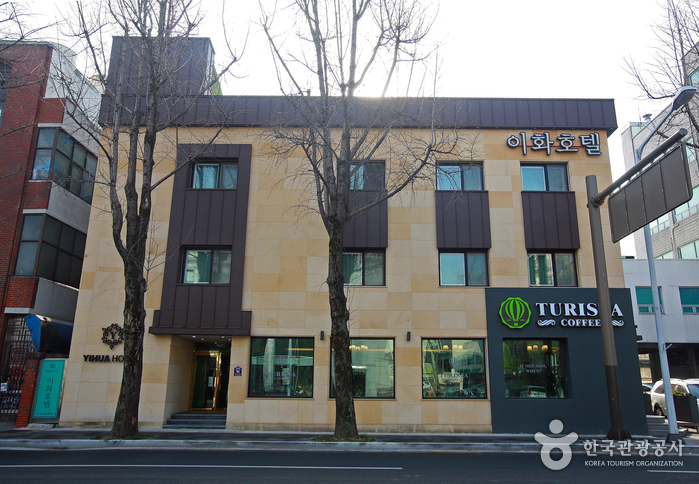
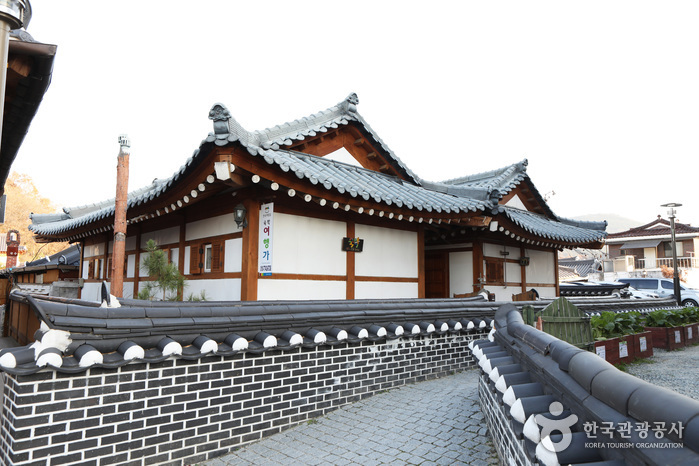
![Yangsajae [Korea Quality] / 문화공간 양사재 [한국관광 품질인증]](http://tong.visitkorea.or.kr/cms/resource/75/1879875_image2_1.jpg)
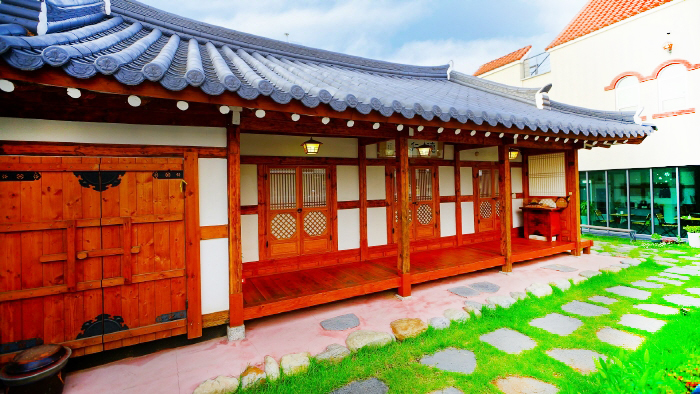
![The Hanok [Korea Quality] / 더 한옥 [한국관광 품질인증]](http://tong.visitkorea.or.kr/cms/resource/68/2556468_image2_1.jpg)
![Daeseung Hanji Village & Hanok Traditional Culture Experience Center [Korea Quality] / 대승한지마을한옥전문화페험관 [한국관광 품질인증]](http://tong.visitkorea.or.kr/cms/resource/25/2047925_image2_1.jpg)
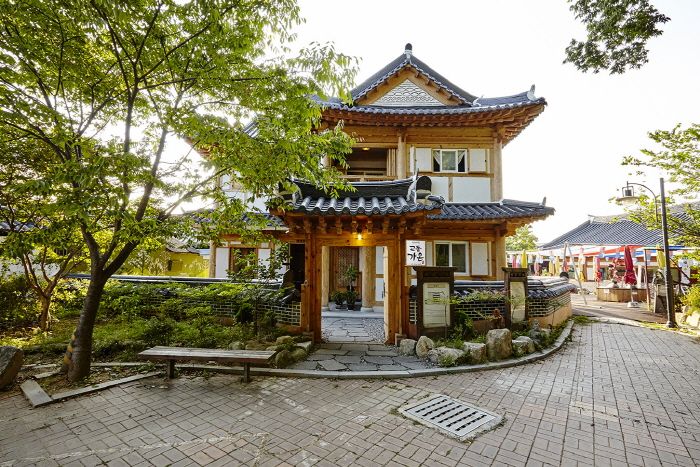
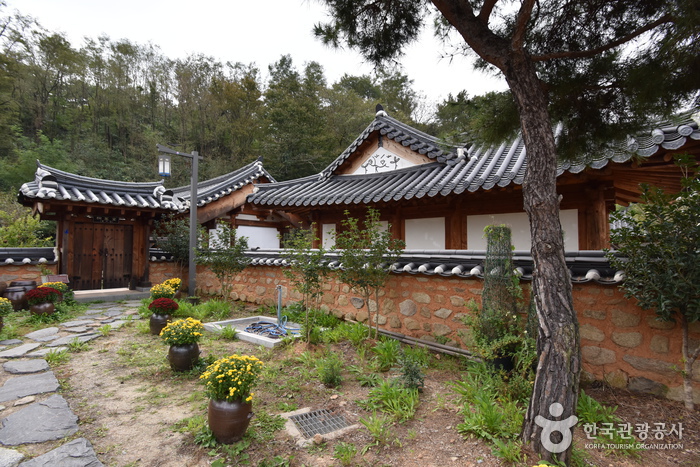
![MUJU Resortel [Korea Quality] / 무주리조텔 [한국관광 품질인증]](http://tong.visitkorea.or.kr/cms/resource/39/2576839_image2_1.jpg)
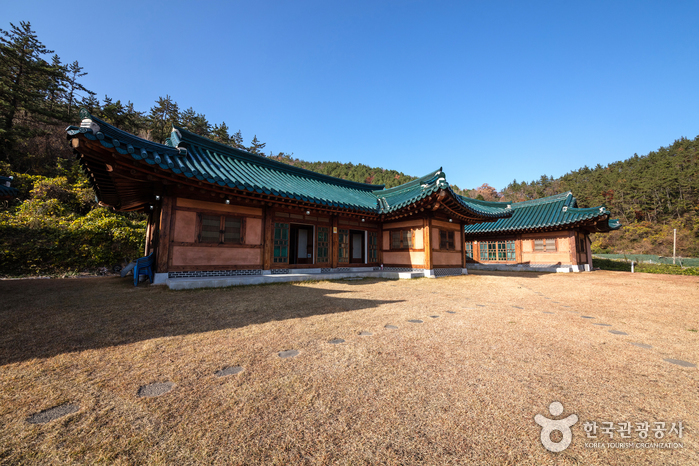
 Français
Français
 한국어
한국어 English
English 日本語
日本語 中文(简体)
中文(简体) Deutsch
Deutsch Español
Español Русский
Русский